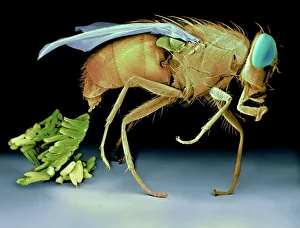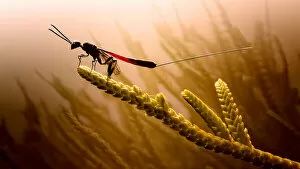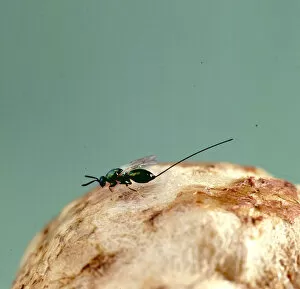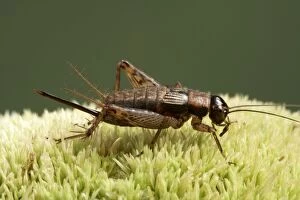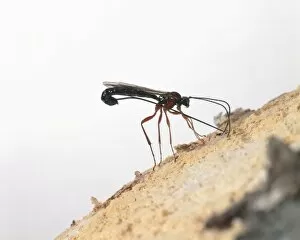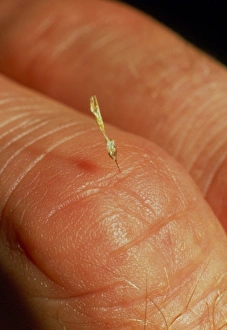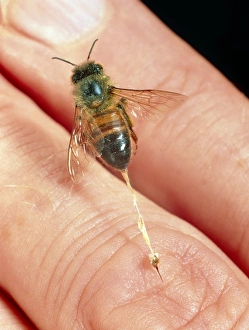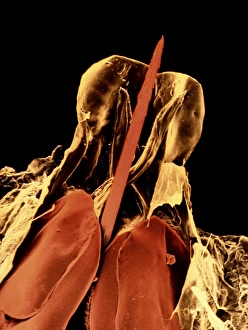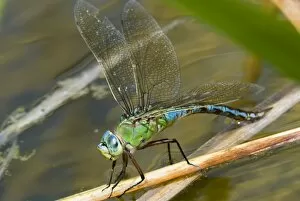Ovipositor Collection
The ovipositor, a fascinating reproductive organ found in many insects, plays a crucial role in the continuation of their species
All Professionally Made to Order for Quick Shipping
The ovipositor, a fascinating reproductive organ found in many insects, plays a crucial role in the continuation of their species. One such example is the blowfly, as depicted in Picture No. 12010245 from The Pictorial Museum of Animated Nature (engraving). This microscopic marvel allows female blowflies to lay their eggs with precision and efficiency. Equipped with an ovipositor that can be seen under scanning electron microscopy (SEM), these flies search for suitable locations to deposit their eggs. As they hover over decaying matter or open wounds, the ovipositor extends and delicately places each egg where it will thrive. But it's not just blowflies that possess this remarkable adaptation; other insects like parasitic wasps also rely on their ovipositors for survival. In Picture No. 11675415 and Picture No. 11675414, we witness the intricate structure of a female parasitic wasp's ovipositor as she prepares to inject her eggs into unsuspecting hosts. Nature never ceases to amaze us with its diversity, even when it comes to ovipositors. Take a look at Picture No. 10896370 showcasing the elongated and needle-like ovipositor of a gadfly or explore the serrated edges of a saw-fly's ovipositor in another engraving from The Pictorial Museum of Animated Nature. Not limited to just functional purposes, some species have evolved extravagant adaptations within their ovipositors too. A close-up shot on Heteropteryx dilatata, commonly known as jungle nymphs, reveals an astonishingly long and slender appendage used for laying eggs deep within tree bark or soil crevices. Whether you're observing blowflies meticulously placing their eggs or admiring the diverse forms of insectovipositers through engravings and photographs – one thing is clear.

